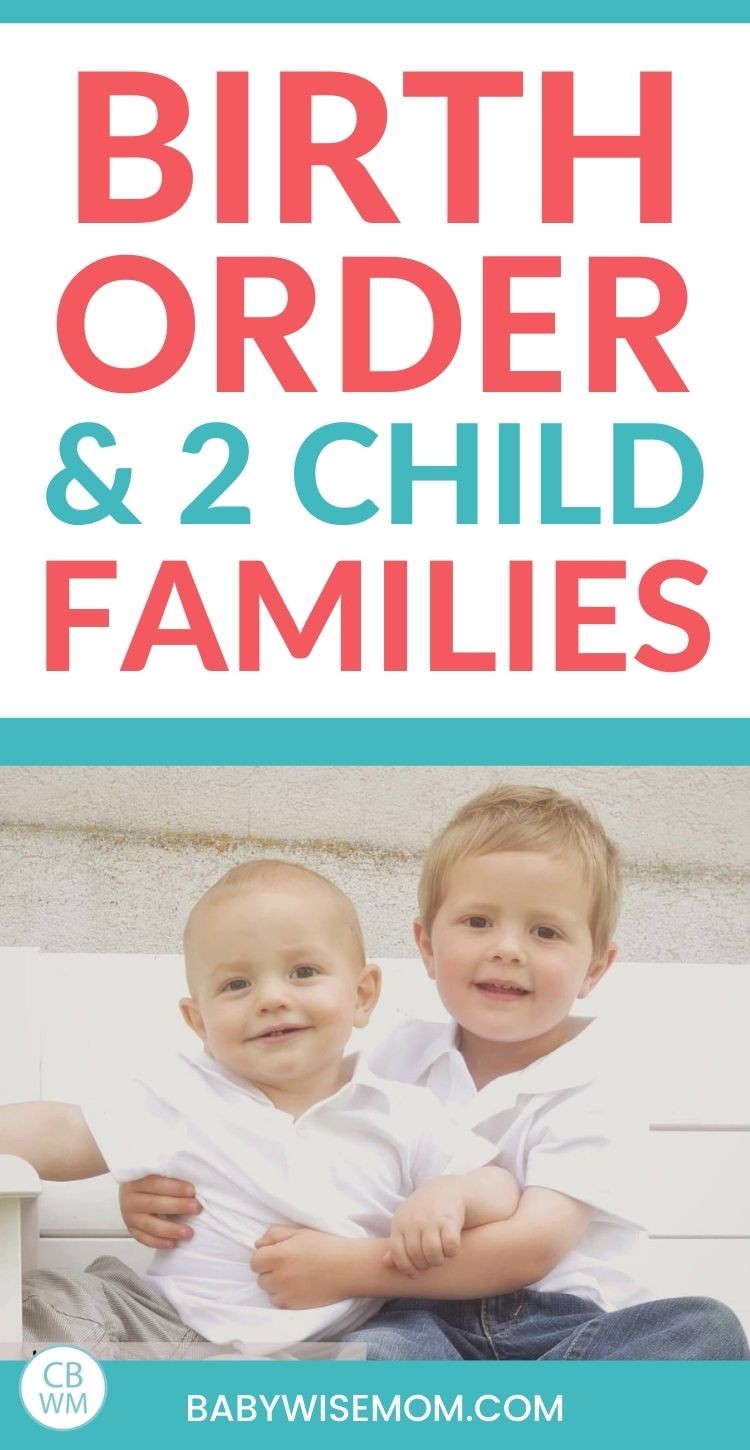Get tips for avoiding sibling rivalry in a two-child family and learn how birth order impacts two kids.

If you currently have two children or plan to have two children total, the chapter on parenting the two child family is just right for you. Leman discusses some tips and strategies to do your best in his book The Birth Order Book
He talks about the different gender scenarios–two boys (where Mother’s influence is of ultimate importance), two girls (where father’s influence is key), and boy-girl (where the standard rivalries found in two children families is not usually present).
In a two-child family, you do not have a middle child. You have an oldest child and a youngest child.
Now for some of my own personal commentary on the topics.
Post Contents
Boy/Girl Two Child Families
First, for the boy/girl. While I obviously don’t have that now, I did for a couple of years.
Leman comments that “…a first-born boy and a second-born girl can often develop a close emotional bond” (page 298).
This is certainly true of my first two. Brayden and Kaitlyn are best friends, and I have decided they are twins separated by birth.
They are super tight. These two also don’t compete with each other in most instances.
Girl/Girl Two Child Families
I grew up in a two-child family. I have one little sister. We definitely had rivalries.
My little sister did everything she could to avoid following in my footsteps. For example, I was a singer. She also has a great singing voice, but dropped out of lessons for fear of being compared to me.
Avoiding Sibling Rivalry
So a trick as a parent with two children is learning to manage these rivalries so they don’t become a problem for one or both children.
Leman has a list of ideas for you:
- Don’t label: Don’t label one as “good” and one as “bad.” Don’t compare.
- Love and relate individually: Point out what you love about each child as an individual. Don’t ask one child to be more like another child.
- Love unconditionally: Love your child no matter what grades are or even what behavior is like. You always love the person.
- Treat as individuals: Things don’t have to be perfectly equal for both children. The older child can have a later bedtime at points in life.
- Maintain consistency: It will mean a lot to the oldest child for you to be consistent about rules.
- Have age appropriate responsibilities: Remember, it is easy to try to treat two children the same, but you aren’t doing either one favors with that. You will either have too low of expectations for one or too high for the other. It is also possible you would land somewhere in the middle.
- Treat kids as individuals. You don’t have to keep things exactly even. Parent each child individually. If the oldest was ready for a certain freedom at five, it doesn’t automatically mean the youngest will be, too. She might be ready earlier or later.
- One-on-one time: One-on-one time is very important. As Leman says about this time, “You don’t find it; you make it.” Take one child shopping, go out to eat together. “Dozens of ways to spend one-on-one time together will occur to you, if you really want to do it” (page 306). For more on this idea, see my 13 Parent Child Date Ideas post.
I think some major tricks to parenting the two-child family is to figure out how to treat children fairly yet as individuals, also.
With two children, you better believe they are noticing things like how much time they get with parents, what expectations are of them compared to the other, and how often little sister gets new furniture (um, yes, that is my real life).
You won’t be perfect, but you can try your best.
Related Posts
- Tips for Parenting First Borns and Oldest Children
- Understanding the Middle Child–Why They are Balanced
- Super Common Traits of a Youngest Child
- Parenting Tips for All Birth Orders
- Siblings Without Rivalry Book

